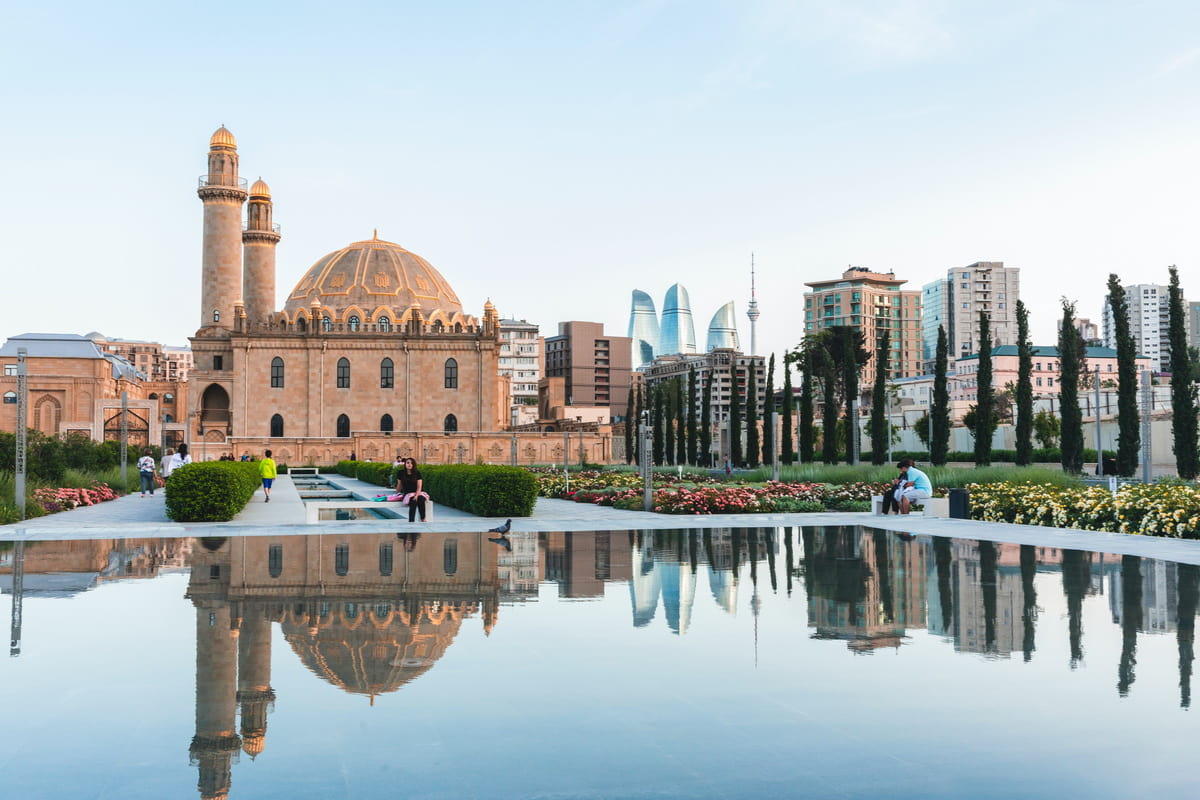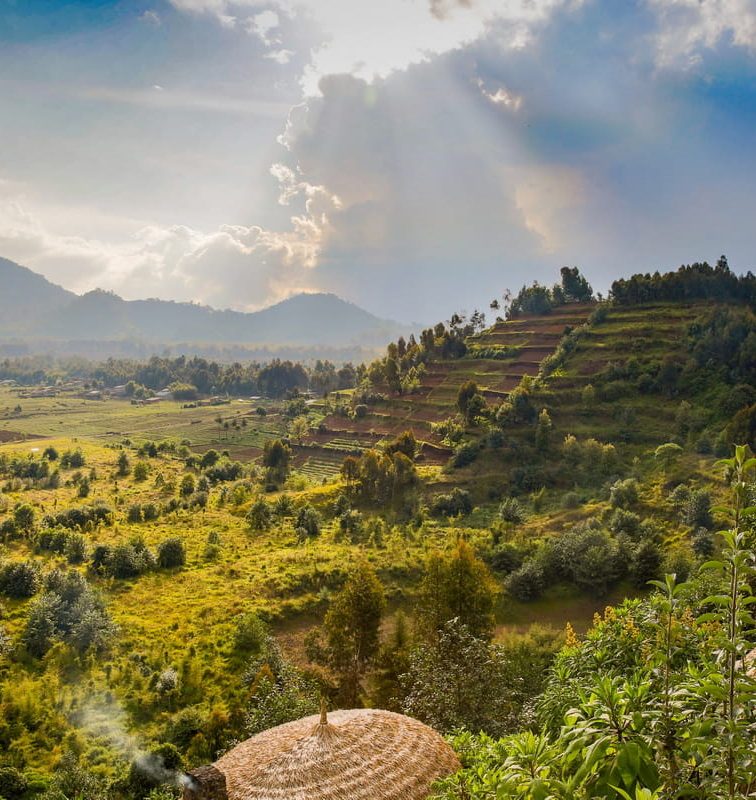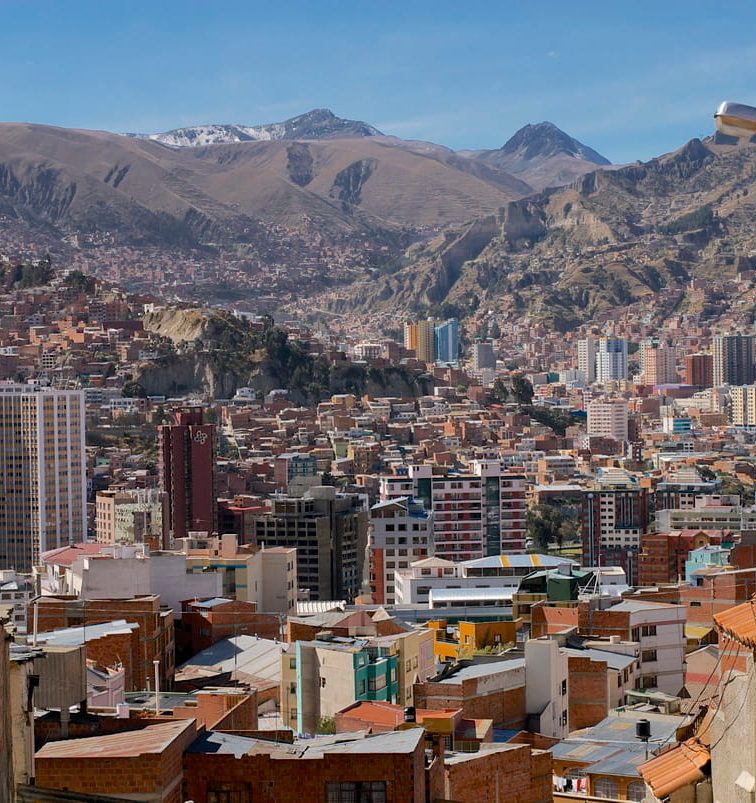Alright, folks, gather ’round. Are you ready to dive into a country that’s as scorching hot as a perfectly cooked kebab? I’m talking about Azerbaijan, the Land of Fire, where the scenery is as diverse as its cultural tapestry.
Nestled in the Caucasus Mountains and lapped by the waves of the Caspian Sea, this republic is a Pandora’s box of history, natural beauty, and endless surprises.
In this whopping list of 35 fun facts about Azerbaijan, we’re going deep—like, Caspian Sea deep—into the things you should know about this gem of the northern hemisphere. So, buckle up! 🎢
1. The Land of Fire: Azerbaijan’s Ancient Nickname
Ah, Azerbaijan, affectionately known as the Land of Fire. What’s the deal with that, you ask? Well, you can thank its natural gas and oil deposits for this fiery moniker. For centuries, flames have literally burst from the earth due to underground gas reserves.
The phenomenon was so awe-inspiring that Zoroastrian temples were built around these natural eternal flames. Yup, this place was the original Fire Nation before Avatar made it cool.
2. Caspian Sea Connection: A Landlocked Marvel
Azerbaijan is bordered by the Caspian Sea to the east, and let me tell you, this isn’t your average pond. It’s the world’s largest landlocked body of water, but it’s technically not a sea nor a lake. Confused yet? It’s a saltwater lake with characteristics of both seas and lakes. Kind of a hybrid, like a labradoodle but wetter.
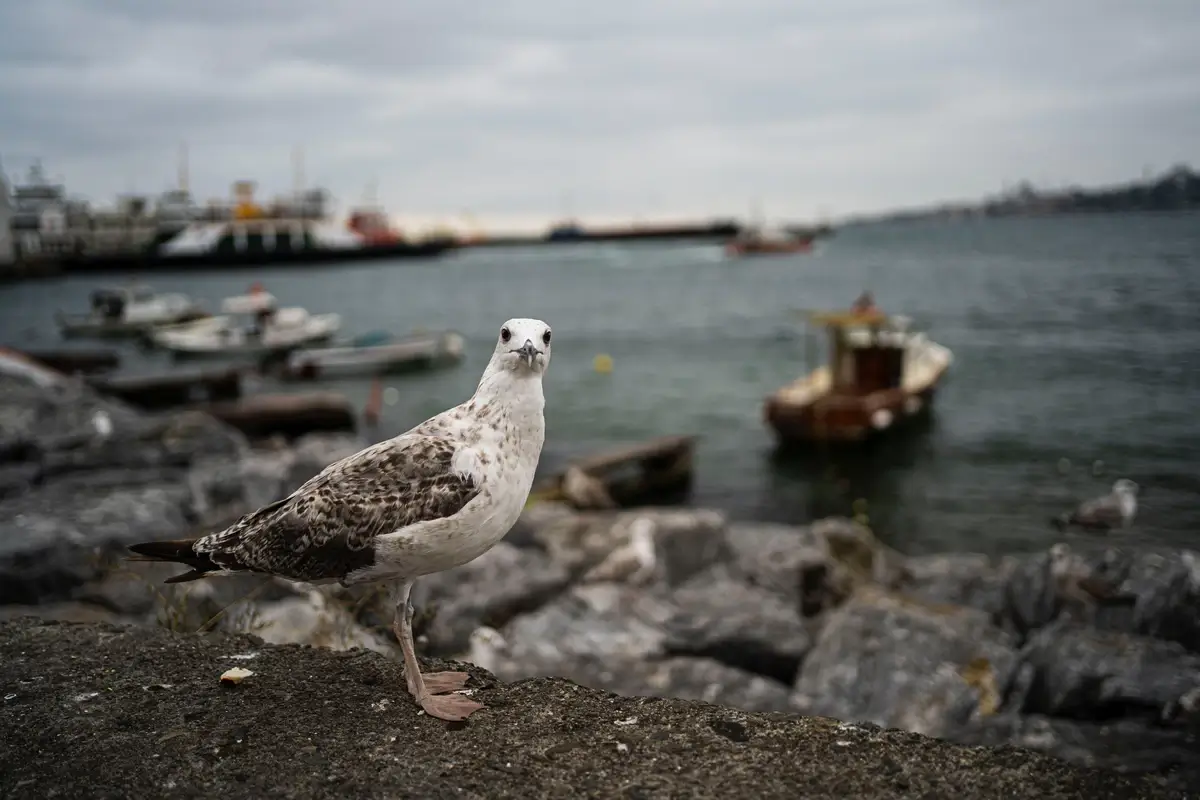
Kerim Canbaşak / Pexels
3. Baku: The World’s Lowest-Lying Capital
So you think you’re good at limbo? Well, Baku takes the cake for being the world’s lowest-lying capital. Yup, it’s situated 28 meters below sea level. I guess they’re taking “keeping it low-key” to a whole new level—literally.
And it’s not just the altitude; Baku is a vibrant blend of the old and new, where flashy skyscrapers coexist with ancient palaces. Not too shabby for a city chilling below sea level, eh?
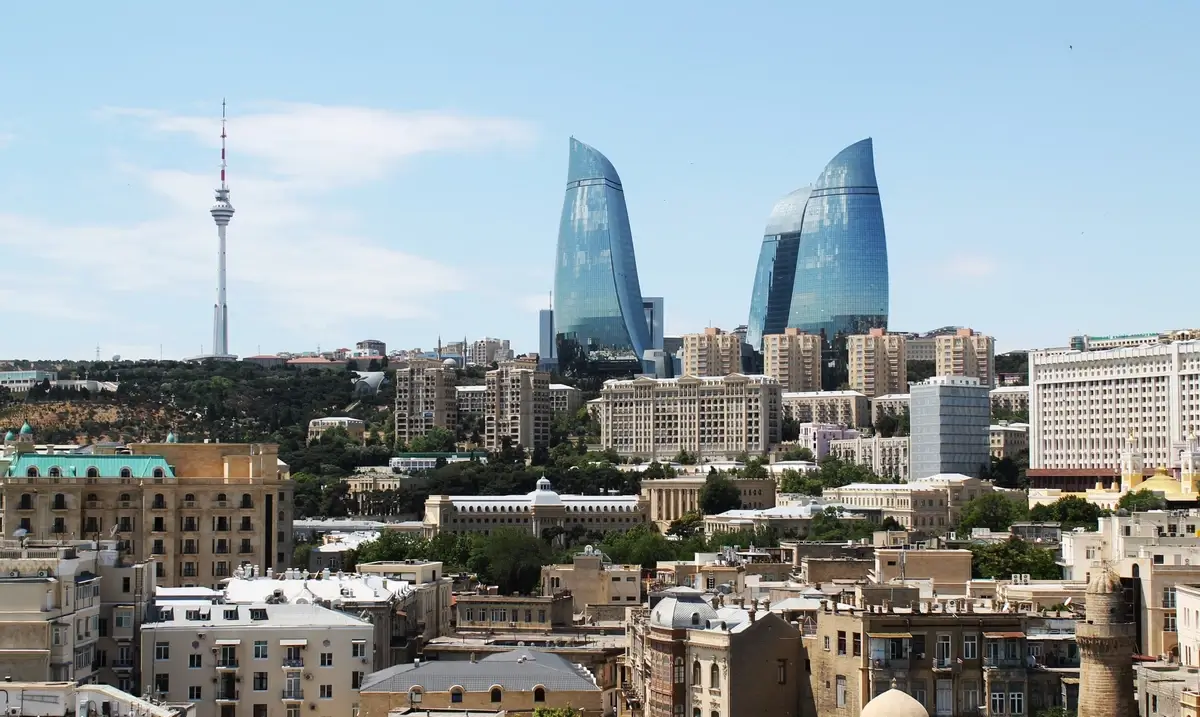
Ismail O. Ukav / Pexels
4. Nagorno-Karabakh: The Armenia Conflict Explored
Alright, let’s pivot to a serious note: the Nagorno-Karabakh conflict. This disputed region has been a source of tension between Azerbaijan and Armenia for decades. It officially ignited in the late ’80s and led to a full-blown war until a ceasefire in 1994. But guess what? Tensions flared up again in 2020. This isn’t some age-old squabble; it’s ongoing and highly sensitive.
So, why is it important? It’s a testament to the complicated geopolitics of the Caucasus. There’s a lot at stake—cultural heritage, national pride, and human lives.
5. The Caucasus Mountains: Azerbaijan’s Natural Barrier
Say hello to the Caucasus Mountains, which offer more than just jaw-dropping vistas. These towering giants act as a natural barrier separating Azerbaijan from Russia in the north and Georgia to the northwest. The Greater and Lesser Caucasus ranges provide not only natural beauty but also a fortress of sorts, lending the country some strategic advantages.
And for the adventure junkies, the mountains offer some kick-butt hiking trails and ski opportunities. Nature’s gym, anyone?
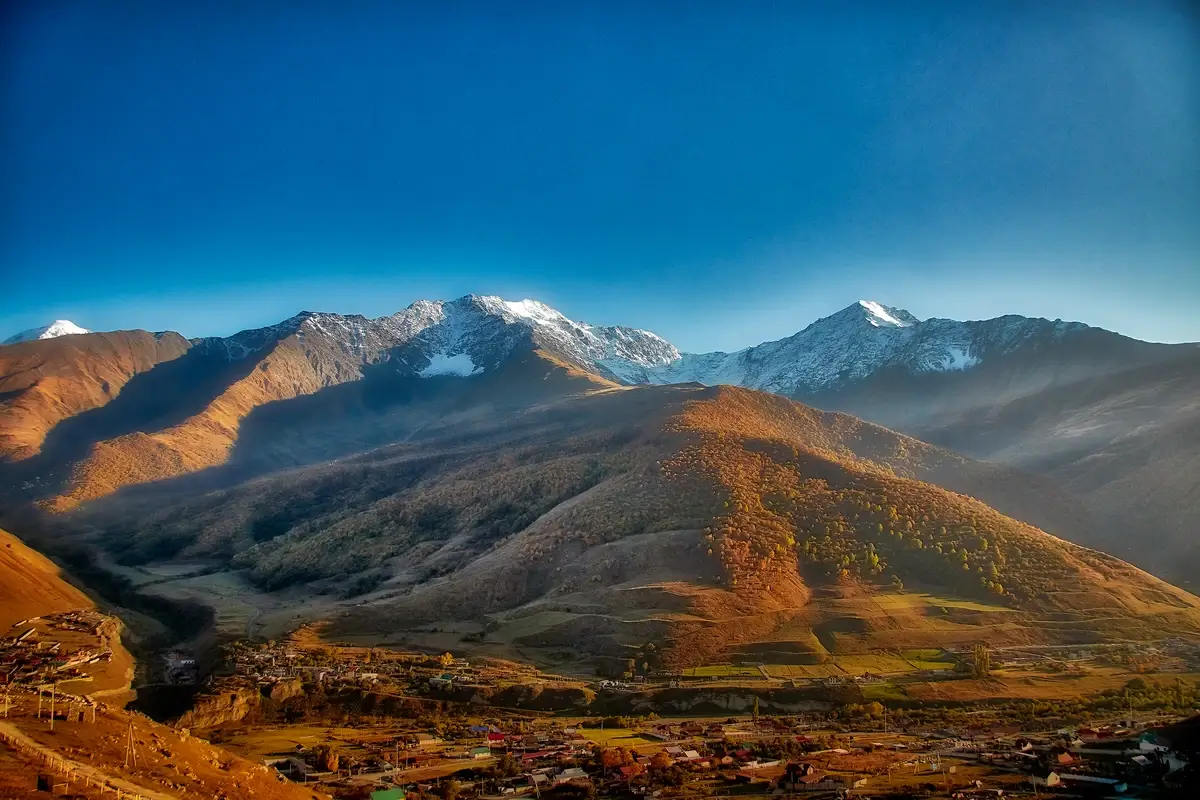
Dmitriy Protsenko / Flickr
6. A Secular Muslim-Majority Nation
Guess what? Around 97% of the population in Azerbaijan is Muslim. But hold your horses—Azerbaijan isn’t an Islamic republic; it’s a secular Muslim-majority nation. That means religion and state are like those friends who enjoy each other’s company but need their space.
You’ll find mosques, of course, but the country also celebrates religious diversity with its synagogues and churches. Religion here is more of a cultural touchstone than a political one. It’s a lesson in coexistence that many could learn from.
7. The Azerbaijani Manat: Currency Tales
Buckle up for a rollercoaster ride through economics—no yawns allowed! The Azerbaijani Manat has faced more ups and downs than your favorite soap opera. Introduced in 1992 to replace the Soviet Ruble, the Manat has undergone devaluations but has also shown resilience.
But here’s where it gets quirky: Azerbaijani banknotes feature texts in Latin and Cyrillic alphabets, capturing the nation’s complex linguistic history. Not just a currency, the Manat is a cultural document—wrapped up in economics, politics, and identity.
8. Mud Volcanoes: A Geologist’s Dream
Welcome to the muddy madness, folks! Azerbaijan has the highest concentration of mud volcanoes in the world. Now, these aren’t your run-of-the-mill volcanoes that shoot lava and all that jazz. Nah, these bad boys ooze mud and gaseous substances. And every so often, they throw a proper tantrum and shoot flames high into the air. Remember that Land of Fire nickname? Yep, it’s not just a pretty face!
Geologists, pack your bags because you won’t find a more Instagrammable collection of mud volcanoes anywhere else. Really, it’s science with a side of spectacle.

Martin Lopatka / Flickr
9. Gobustan Rock Art: A Peek Into Prehistory
If you’re into history, brace yourself for a trip way, way back in time. We’re talking about Gobustan Rock Art, an archaeological site that dates back to the Stone Age. These rock carvings, etched into a semi-desert region about 64 kilometers southwest of Baku, give us a peek into how our prehistoric homies lived, hunted, and danced.
So, forget about ancient Rome or Greece for a second; we’re traveling 30,000 years back, baby. Now, how’s that for a #ThrowbackThursday?
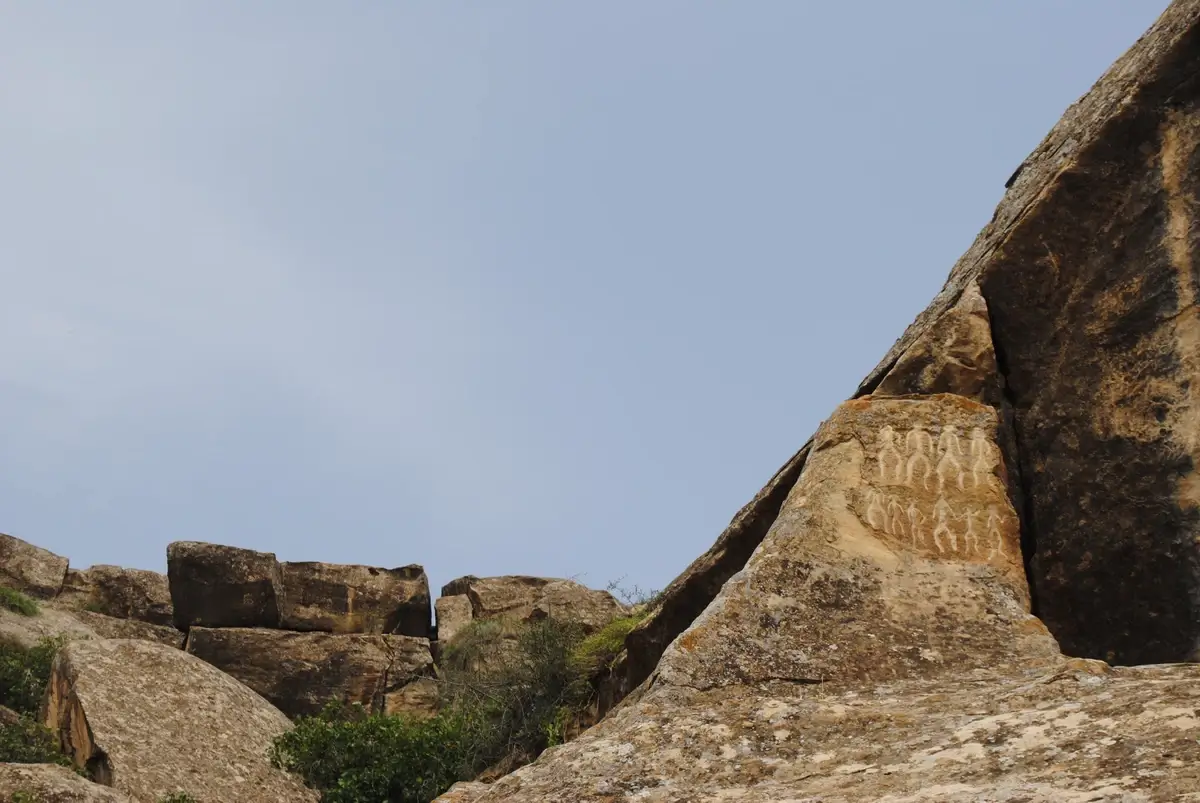
Salvatore / Flickr
10. Tolerance Street: Where Religions Coexist
Fancy a stroll down Tolerance Street? Nope, it’s not a set from a utopian movie; it’s an actual place in Baku. Here, a mosque, a synagogue, and a church are neighbors. Yes, you heard that right! This is where religious tolerance isn’t just preached; it’s lived.
On Tolerance Street, you can hear the Islamic call to prayer, the church bells, and the Hebrew prayers, all coexisting like the ingredients of a well-mixed cocktail. Bottoms up to harmony!
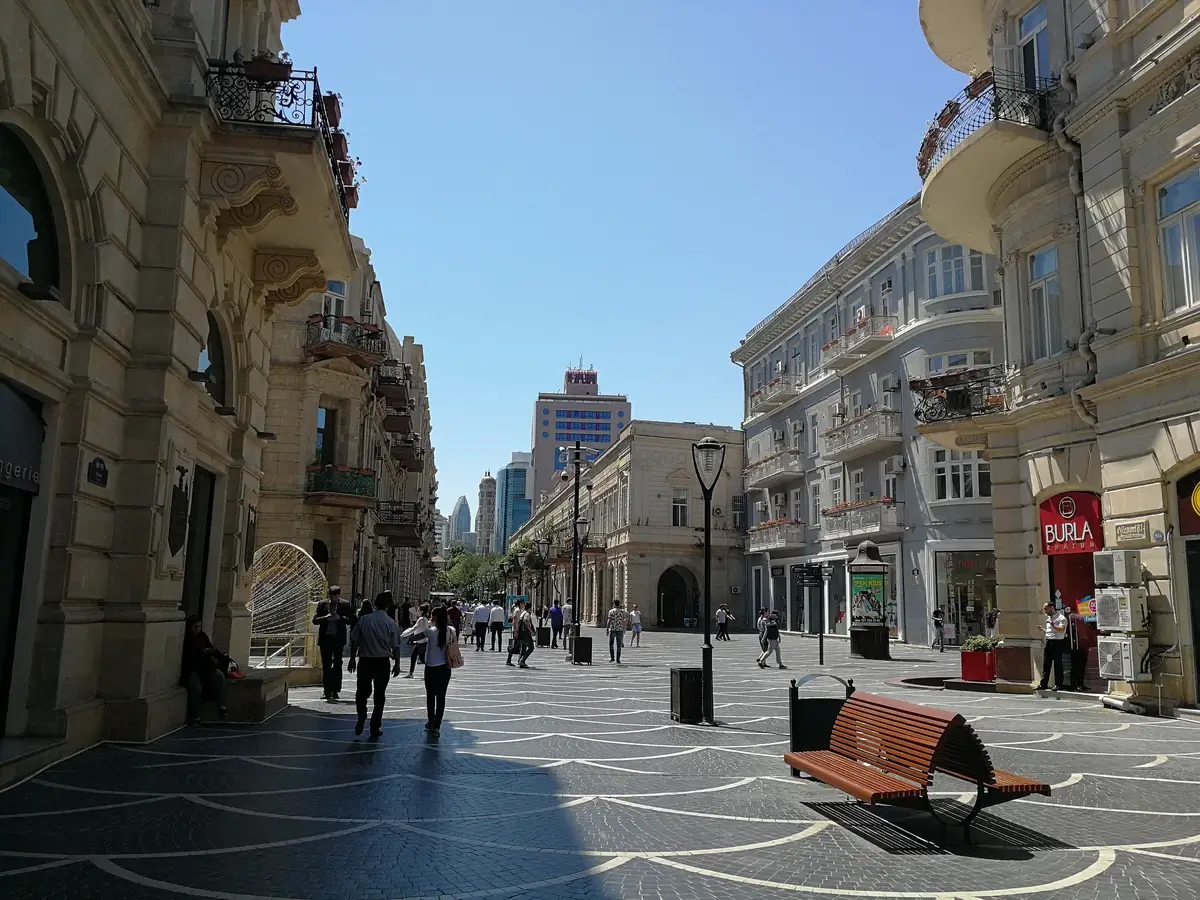
Aleksandr Zykov / Flickr
11. Tea Culture: The Art of Azerbaijani Çay
Now let’s talk about Azerbaijan’s national drink: tea, or as they say, Çay (pronounced “Chai”). Served in a pear-shaped glass called “Armudu,” this isn’t just a beverage; it’s an art form, a social activity, and yes, a national pastime. Here, tea is more than just leaves and hot water—it’s a ritual.
Whether it’s a family gathering, a business meeting, or a date, tea is the main event. It’s like the country’s own version of a handshake, but steamier and way more delicious.
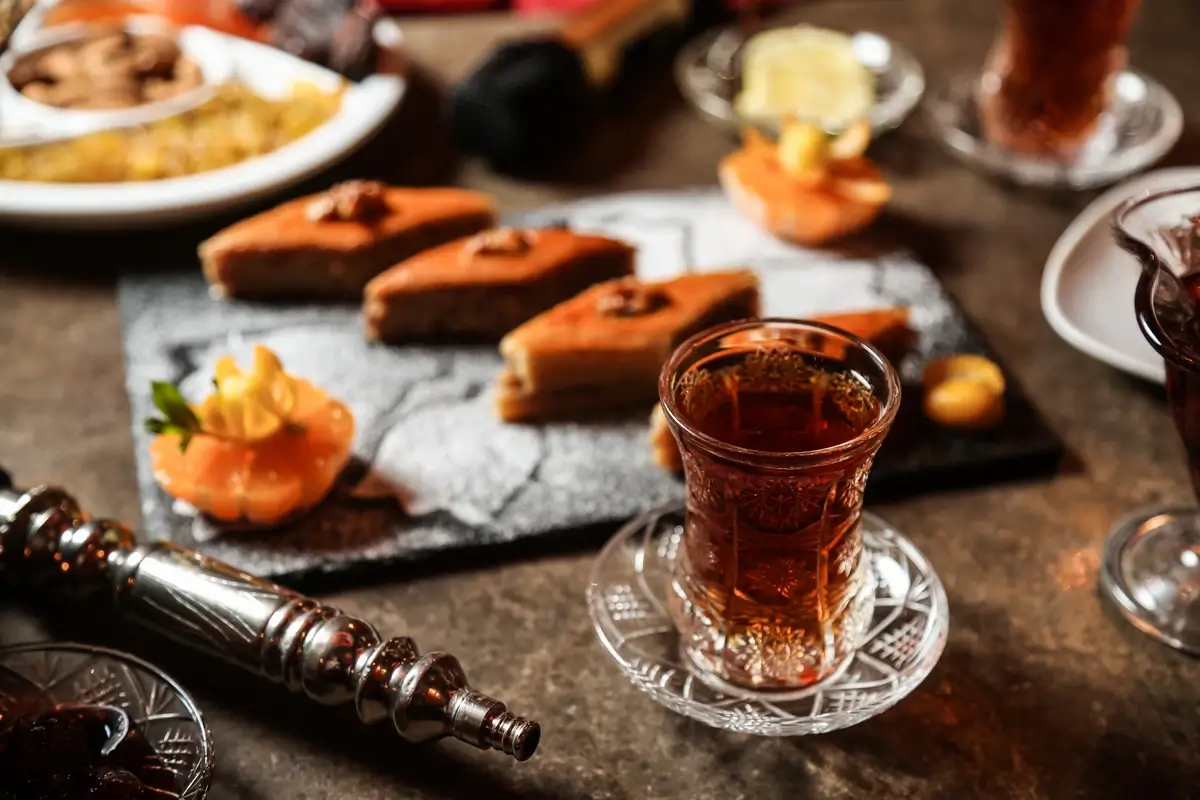
Image by stockking / Freepik
12. More Than a Rug: The Art of Azerbaijani Carpets
Alright, rugrats, this one’s for you—no, not the cartoon, I’m talking about the breathtaking art of Azerbaijani carpets. These aren’t your standard IKEA rugs; they’re woven tapestries of history, culture, and jaw-dropping craftsmanship. Each region in Azerbaijan has its own distinct style and pattern, turning every carpet into a regional ID card.
And get this: Azerbaijani carpets are so epic, they have their own UNESCO status. Yes, these carpets are literally world-famous. So, if you’ve been dismissing carpets as mere floor decor, it’s time for some reevaluation.
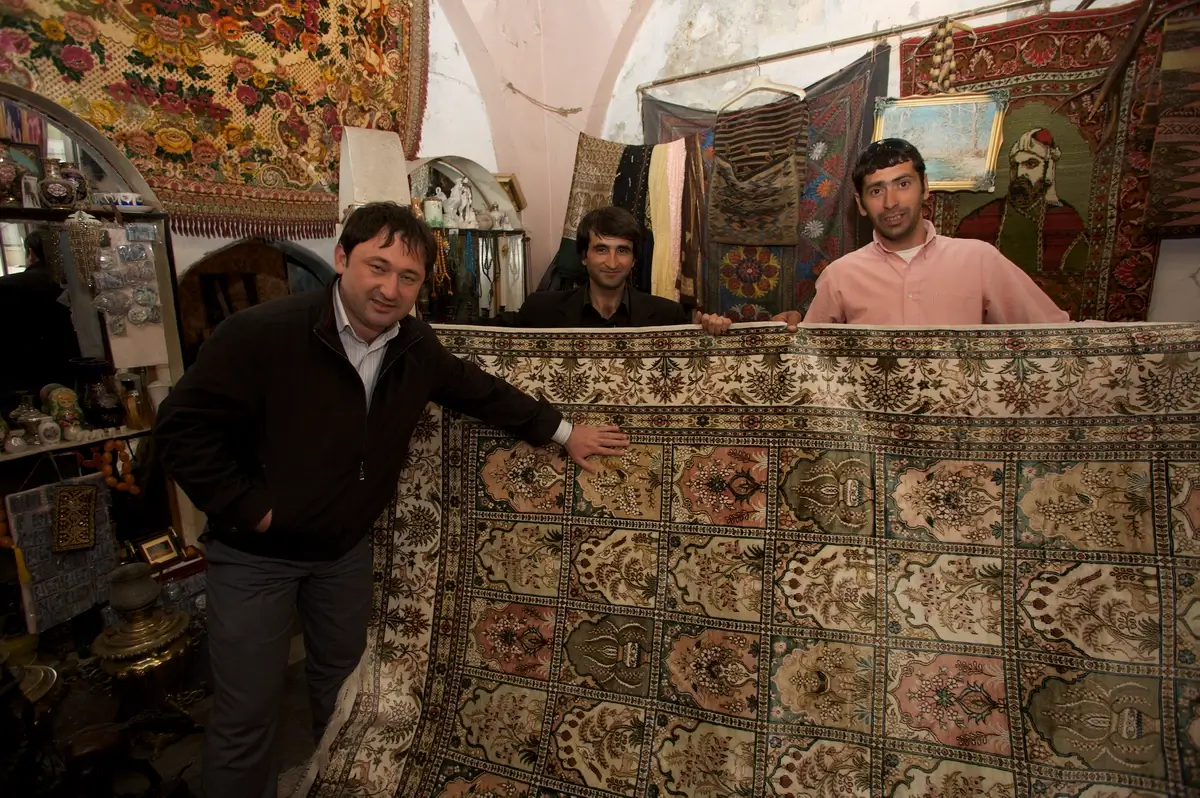
Buying carpets in Baku. Nick Taylor / Flickr
13. Chess: Azerbaijan’s Intellectual Sport
Checkmate! That’s a word you’ll hear a lot if you delve into the Azerbaijani chess scene. The game is more than just a pastime here; it’s considered an intellectual sport. Azerbaijan has produced some of the world’s leading grandmasters, including Shahriyar Mammadyarov and Teymur Radjabov.
The country takes chess so seriously that it’s part of the school curriculum. And for good reason—chess teaches strategy, patience, and how to rock a super-intense thinking face. So, no, this isn’t your grandpa’s lazy Sunday chess; this is Azerbaijan-level chess!

Andreas Kontokanis / Flickr
14. The Khojali Massacre: A Dark Chapter
Okay, deep breaths, because we’re venturing into somber territory. The Khojali Massacre was a tragic event during the Nagorno-Karabakh War, occurring in 1992. Hundreds of Azerbaijani civilians were killed in the town of Khojali, marking one of the darkest chapters in recent Azerbaijani history.
The topic remains a significant point of discussion and reflection within the country and its relations with Armenia. It’s an event that has left a deep scar, making dialogue and reconciliation paramount.
15. Oil Reserves: Azerbaijan’s Black Gold
Let’s talk liquid gold, shall we? Nope, not the kind you drink—Azerbaijan’s oil reserves. This black gold has been the lifeblood of the Azerbaijani economy for well over a century. The world’s first industrial oil well? Drilled right here in 1846.
Today, Azerbaijan is a key player in the global energy market, exporting crude oil and natural gas. The pipelines don’t just carry fuel; they carry the economic hopes of a nation. From the first oil boom to modern mega-projects, this is one slick story you won’t want to miss.
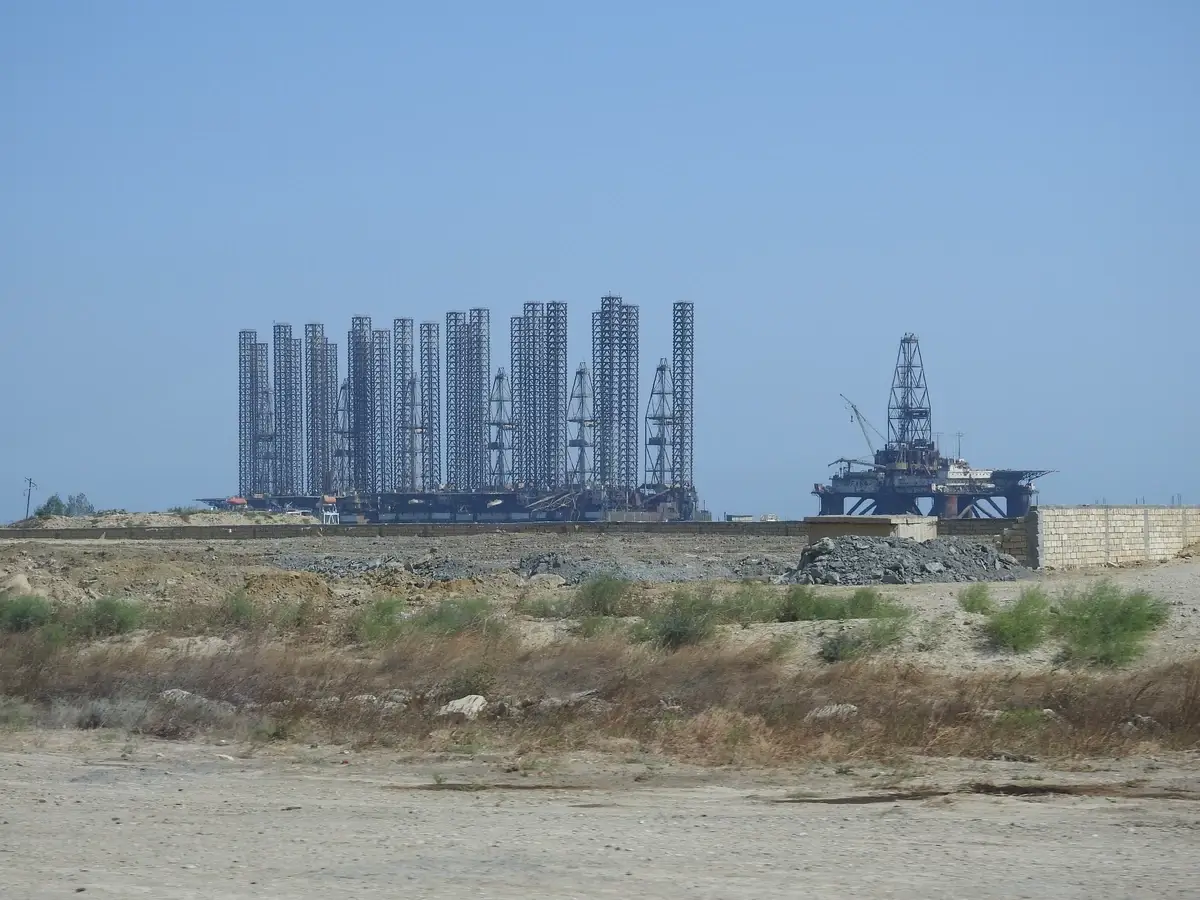
shankar s. / Flickr
16. Novruz Bayram: The Country’s Favorite Holiday
Pull out your party hats, because Novruz Bayram is the ultimate Azerbaijani bash! Think of it as a mash-up between Christmas, New Year, and Easter, but with a unique Azerbaijani twist. Celebrated on March 20th to welcome spring, this holiday is as joyful as it is symbolic. Fire-jumping, egg battles, and lots of pastries—yeah, it’s that cool.
At the heart of this jubilant time is a deep respect for nature and the coming of a new year in the ancient solar calendar. So, when in Azerbaijan, do as the Azerbaijanis do—celebrate Novruz Bayram like there’s no tomorrow!
17. Language: The Evolution of Azerbaijani
Let’s rap about the Azerbaijani language, a rich, Turkic tapestry that’s as melodic as it is complex. The language has gone through significant shifts—Arabic script to Latin and then Cyrillic, only to go full circle back to Latin in 1991.
Here’s the kicker: The Azerbaijani language is not just confined to Azerbaijan. Oh no, folks! You’ll also hear it in parts of Iran, Georgia, and Russia. Talk about a linguistic tour!

Image source: bakuexplorer.com
18. Ashiqs: Azerbaijan’s Singer-Storytellers
Who needs Netflix when you’ve got Ashiqs? These talented folk singer-storytellers are the OG entertainers of Azerbaijan, strumming their sazes (a stringed instrument) and crooning poetic tales of love, heroism, and life’s many ups and downs. It’s storytelling and a concert rolled into one—what’s not to love?
Ashiq performances aren’t just for fun; they’re deeply embedded in the nation’s culture, another feather in Azerbaijan’s UNESCO cap. So the next time you’re in Azerbaijan, don’t miss an Ashiq performance. Trust me; it’s worth it.
19. Plov: The Dish You Need to Try
Foodies, gather ’round because we’re diving into the mouth-watering world of Azerbaijani cuisine, starting with Plov! No, it’s not just rice; it’s an ensemble cast featuring aromatic saffron rice, succulent meat, and an array of fruits and spices. Each bite is a medley of flavors and textures, basically a party in your mouth.
Plov isn’t just comfort food; it’s celebratory grub. Served at weddings, festivals, and any event that calls for a feast, this dish is quintessentially Azerbaijani. If you haven’t tried Plov, have you even been to Azerbaijan?
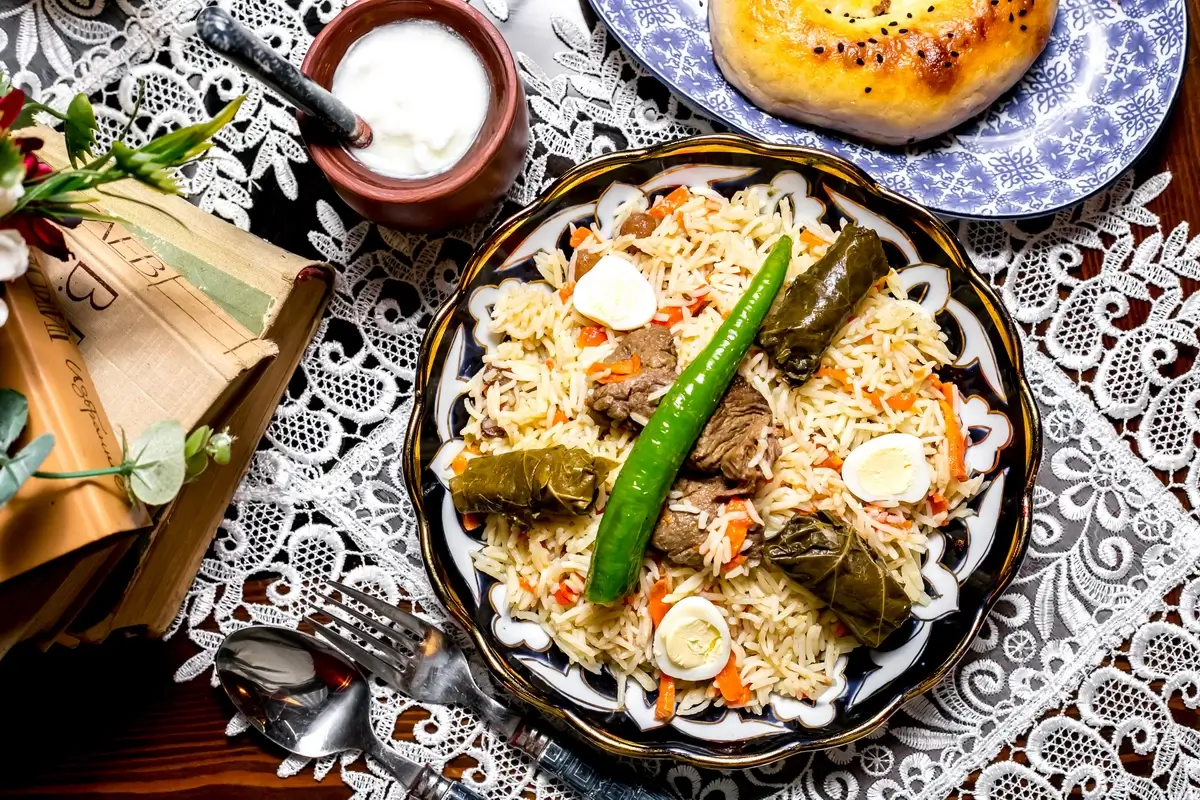
Image by stockking / Freepik
20. A Paradise of Fruits: Pomegranates and More
Fruit lovers, listen up! If you ever find yourself in Azerbaijan, you’re in for a juicy treat. The country is bountiful with fruits, but the pomegranate is the real MVP here. In fact, there’s a whole festival dedicated to it. Yes, a festival for fruit—only in Azerbaijan!
These pomegranates are so fabulously fresh that they’re not just food, they’re practically a national symbol. But it doesn’t end there: From juicy apples to luscious peaches, Azerbaijan is a fruit basket come to life.
21. Regional Dances: Azerbaijan’s Moving Art
Let’s shimmy our way to the dance floor and explore the high-energy world of Azerbaijani regional dances! Each region has its own traditional dance, making it a rhythmic geography lesson. These dances aren’t just a spectacle; they’re storytelling in motion.
Watch the dancers spin, leap, and twirl, and you’ll understand why this art form is considered a national treasure. And let’s not forget the eye-popping costumes; they’re as vivid as a double rainbow on a sunny day.
22. Music Beyond Eurovision: National Treasures
Alright, pop culture junkies, Eurovision might have introduced you to Azerbaijan’s music scene, but trust me, there’s more where that came from. Azerbaijan is home to Mugham, a genre of traditional music that dates back centuries. This isn’t just any tune you’d hum while doing laundry; it’s a complex art form with intricate scales and vocal gymnastics.
And don’t forget about jazz. Yeah, you heard me right—Azerbaijani jazz is a thing, and it’s phenomenal. From traditional to modern, Azerbaijan’s music game is as versatile as a Swiss Army knife.
23. Heydar Aliyev: Shaping Modern Azerbaijan
Time for a history lesson—but don’t worry, it won’t be dull. We’re talking about Heydar Aliyev, the man who has shaped modern Azerbaijan. His tenure as the country’s leader, first as part of the Soviet Union and later as the President of independent Azerbaijan, has left an indelible impact.
Whether you stroll through Baku’s Heydar Aliyev Center or read about educational reforms, you’ll find traces of his influence. The man was, in many ways, a founding father of Azerbaijan as we know it today. A polarizing figure? Yes, but no one can deny his influence in shaping modern Azerbaijan.
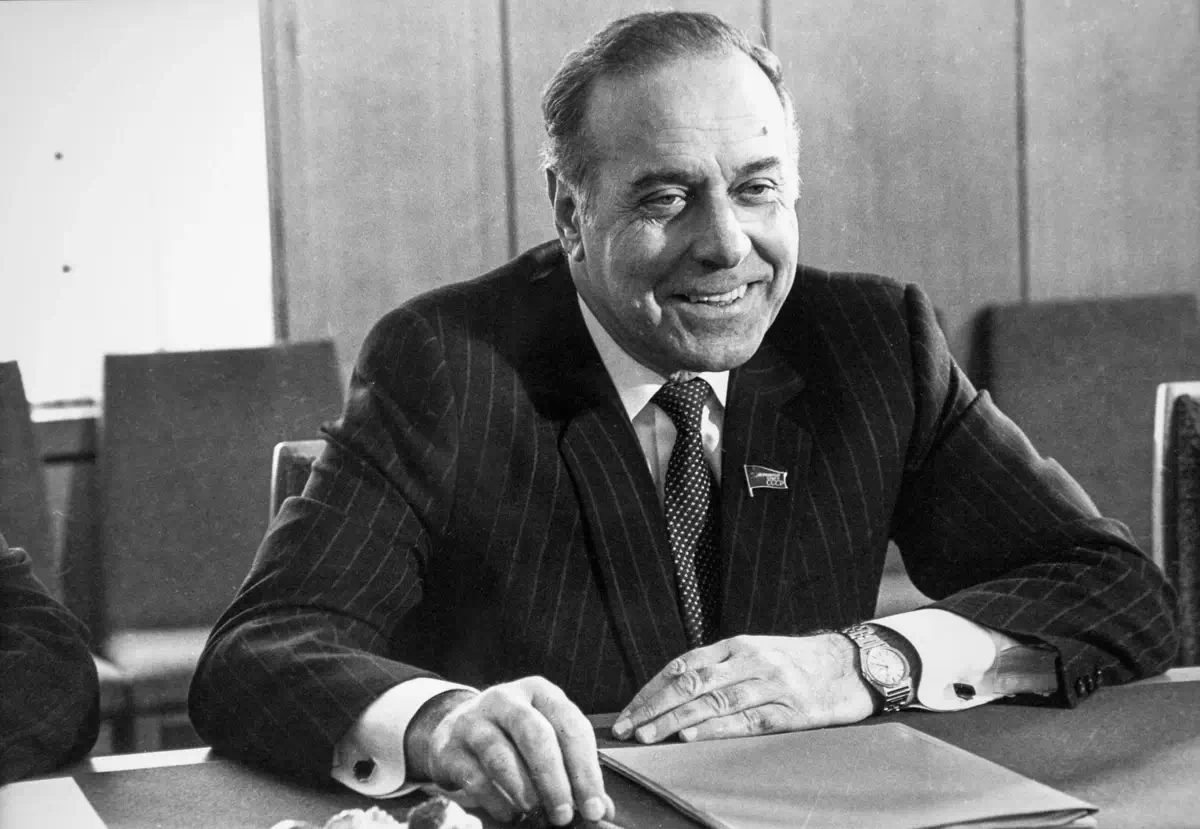
Image source: dailysabah.com
24. The First Muslim Democratic Republic
Hold on to your history books, because here comes a game-changer! Way back in 1918, Azerbaijan declared its independence, becoming the first Muslim Democratic Republic. Yep, you read that right: the first. This was even before Turkey got on the democratic train. Sadly, the republic only lasted two years before the Soviet Union absorbed it, but those two years were revolutionary.
With women’s suffrage and a parliamentary system, Azerbaijan was decades ahead of its time. So next time someone throws a history trivia question at you, you know what to say!
25. The Talysh People: A Southern Minority
Let’s zoom into the southern regions of Azerbaijan and meet the Talysh people—a vibrant ethnic minority that adds another layer to the country’s cultural quilt. The Talysh community primarily inhabits the region bordering Iran and speaks Talysh, a Northwestern Iranian language.
These folks have a rich culture steeped in traditions and rituals. From their vibrant dances to their distinct crafts, the Talysh people are a unique and integral part of Azerbaijani society.
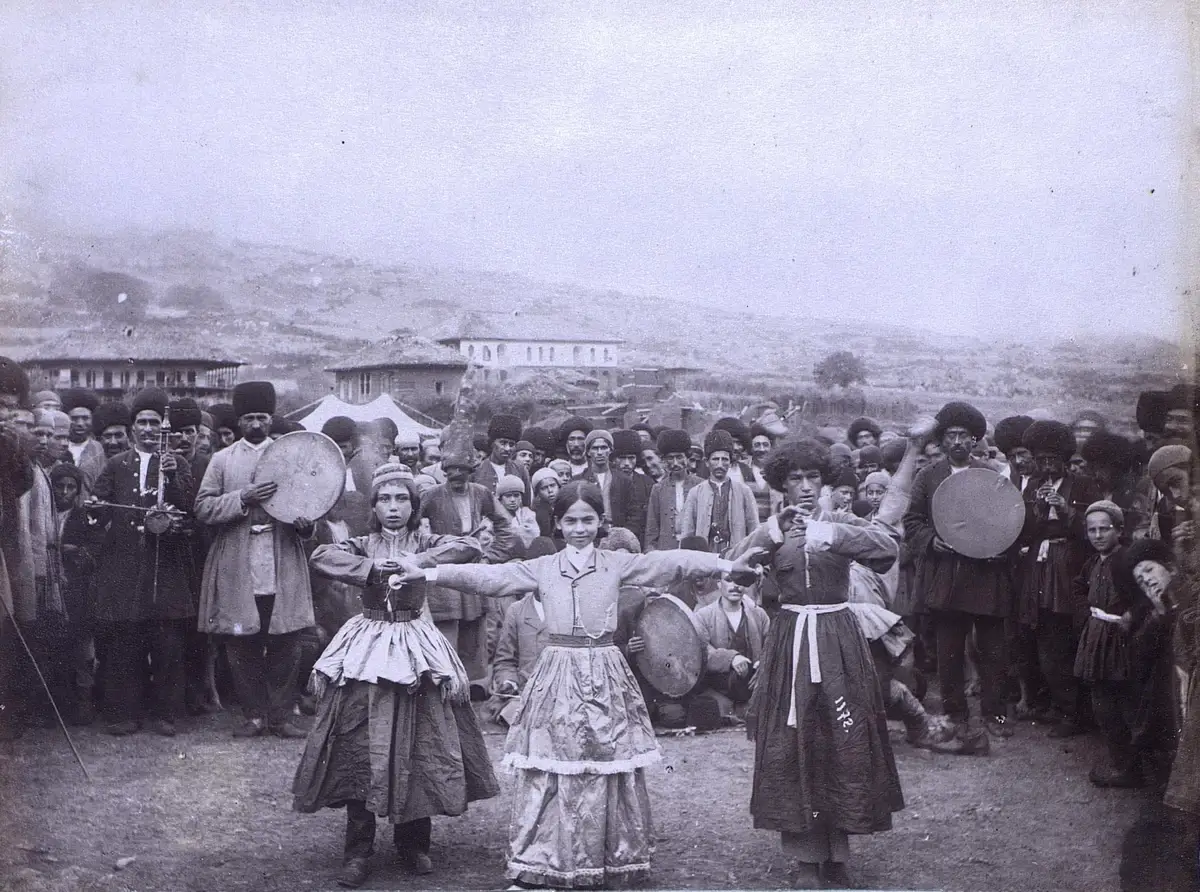
Image source: Wikimedia Commons
26. Petroleum Spas: A Unique Health Experience
Now, how about a spa day—with a twist? In Naftalan, a city in Azerbaijan, you won’t find the usual mud masks or hot stone massages. Instead, get ready for a petroleum spa. Yes, petroleum! Azerbaijan’s black gold is not just fueling cars; it’s fueling health treatments.
The mineral-rich crude oil is believed to have therapeutic properties, treating everything from skin ailments to arthritis. While it might sound unappealing initially, it’s a tradition dating back thousands of years. When in Azerbaijan, why not dip yourself in oil—literally!
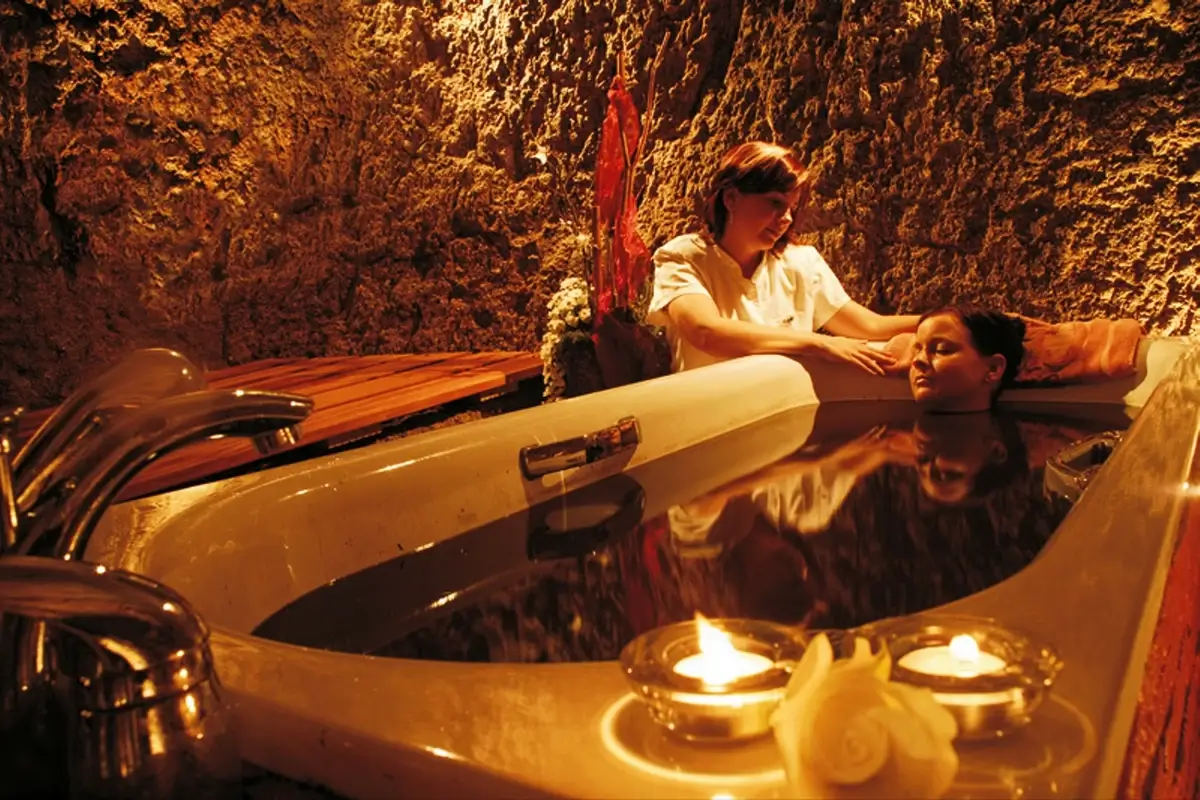
Image source: azertag.az
27. The Buta Pattern: A Cultural Symbol
If you’ve ever marveled at Azerbaijani textiles, you’ve probably noticed the iconic Buta pattern. Also known as paisley, this teardrop-shaped design is an unmistakable symbol of Azerbaijani culture. But it’s more than just a pretty pattern; it’s loaded with symbolism—representing life, growth, and eternity.
From carpets to clothing, the Buta is omnipresent in Azerbaijani art and textiles. It’s such a treasured motif that it’s almost a cultural ambassador for the country!

Image by azerbaijan_stockers / Freepik
28. Geopolitics: Between Russia and Iran
Ah, geopolitics—the ultimate cocktail party topic, am I right? But when it comes to Azerbaijan, it’s hard not to talk about it. This republic is smack dab in between two major powers: Russia to the north and Iran to the south. It’s like being the cream filling in an Oreo cookie of nations.
Why does this matter? Well, Azerbaijan has to navigate a careful path of diplomacy, balancing its relationships with these two heavyweight neighbors. No easy feat, but hey, it adds to the nation’s intrigue.
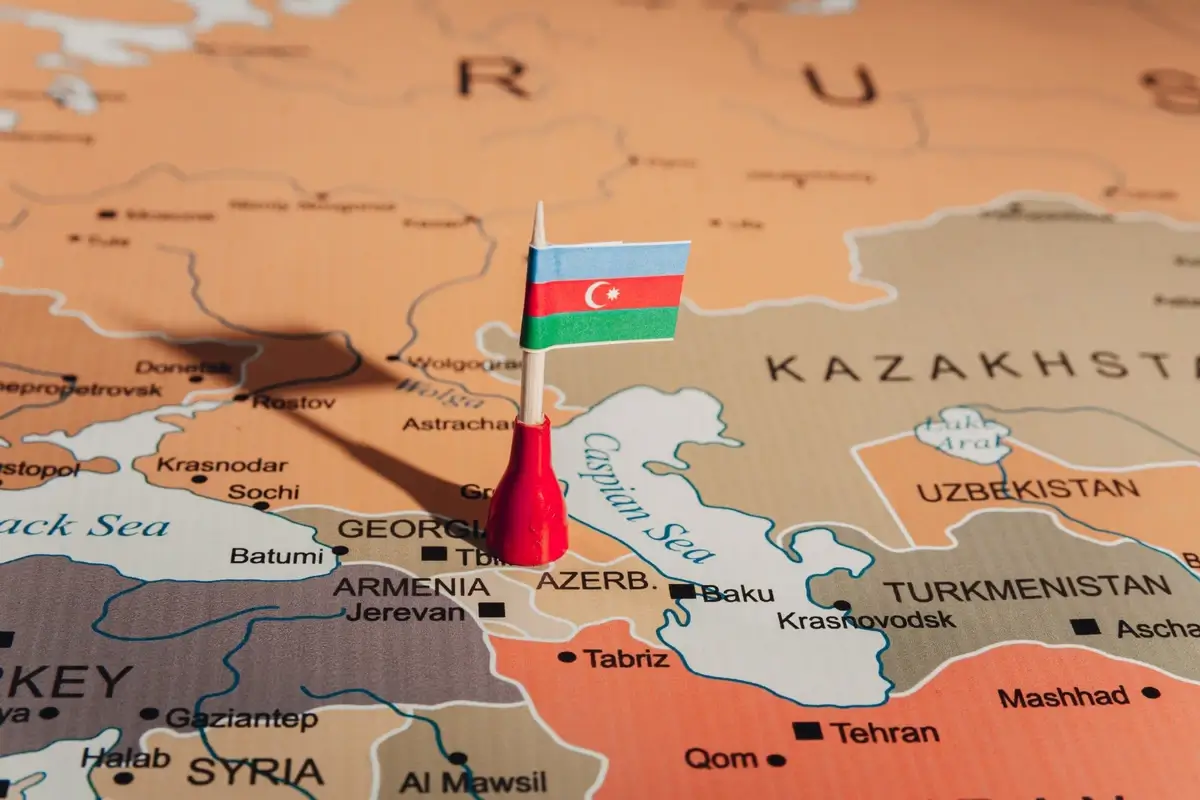
Image source: mappr.co
29. Silk Road: Azerbaijan’s Trading History
Talk about a blast from the past! Azerbaijan was once a significant stop on the ancient Silk Road. Yep, that Silk Road, the famous trading route that connected the East and West like a transcontinental friendship bracelet.
Azerbaijan was a major go-between for merchants lugging everything from spices to, well, silk. The country was essentially the convenience store of ancient times: “Need some silk? Stop by Azerbaijan!”
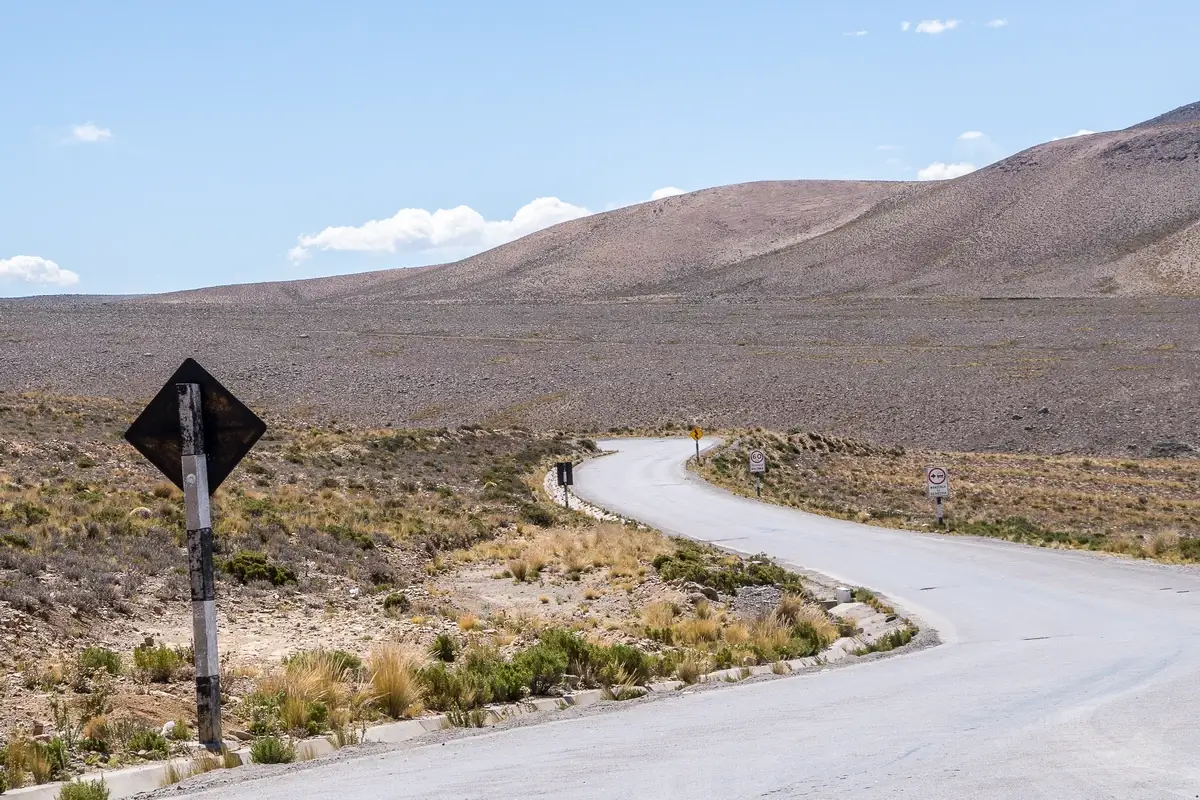
Image by wirestock / Freepik
30. Pioneers in Women’s Rights in the Muslim World
Alright, prepare to have your socks knocked off. Did you know that Azerbaijan granted women the right to vote in 1918? That’s a whole year before the U.S. jumped on the women’s suffrage bandwagon. And remember, this was in the first Muslim Democratic Republic.
Today, Azerbaijani women are visible in all sectors, from business to politics, proving that the country’s pioneering spirit in women’s rights wasn’t just a one-time thing.
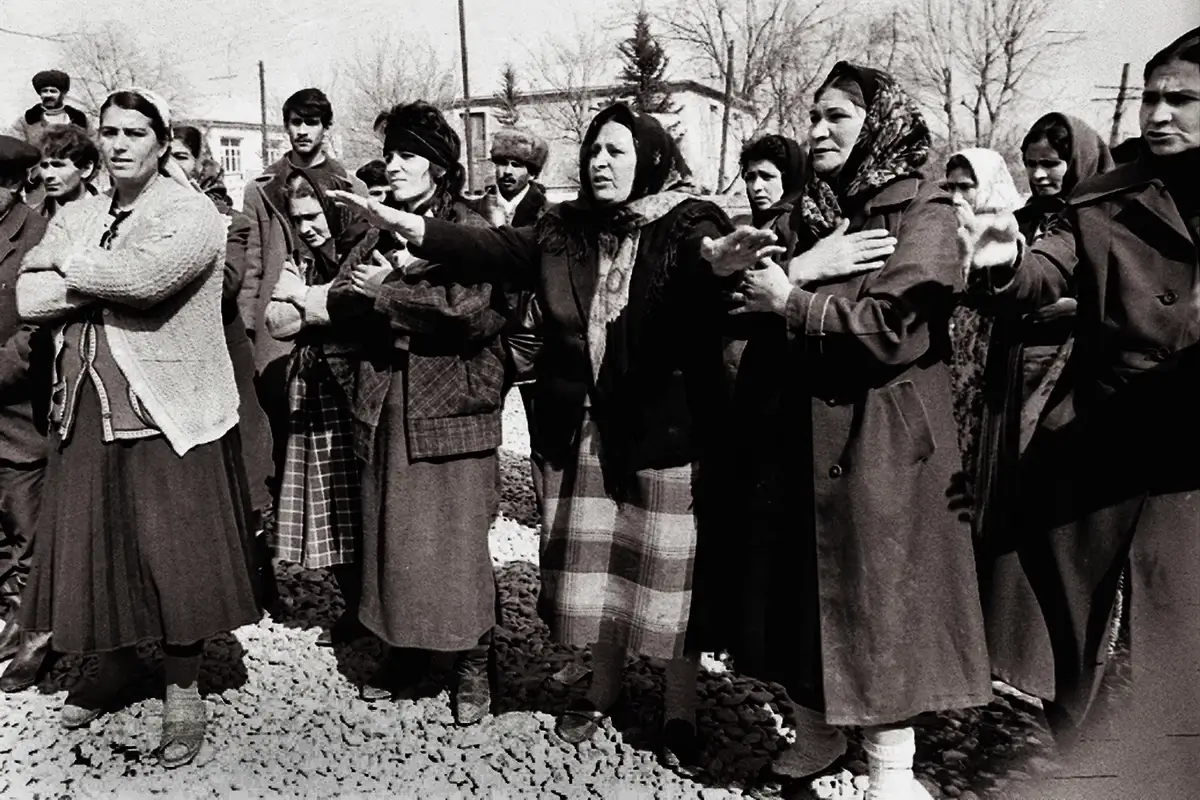
Image source: dailysabah.com
31. Sheki: The Charms of an Ancient City
Let’s take a virtual stroll through Sheki, shall we? This city is like the storybook illustration of ancient Azerbaijan. Located in the foothills of the Greater Caucasus Mountains, Sheki is one of the country’s oldest cities, dating back more than 2,500 years.
From its ancient fortresses to the mesmerizing Palace of Shaki Khans, this place is a historian’s dream. But even if you’re not a history buff, the city’s cobblestone streets and traditional handicrafts make it a charm bomb that’s about to explode!
32. National Animals: From Horse to Eagle
Animals, assemble! When it comes to national symbols, Azerbaijan has a stable—literally. The Karabakh horse, known for its speed and intelligence, is a national treasure. But let’s not forget the eagle, another symbol that captures the Azerbaijani spirit of freedom and majesty.
Both these animals have deep cultural and historical significance. So, whether you’re into four legs or feathers, Azerbaijan has a national animal for you!

Image source: trend.az
33. Saffron: The Spice Worth More Than Gold
Let’s talk about the bling of the culinary world—Saffron. This delicate spice, derived from the flower Crocus sativus, is not just any spice; it’s a spice that’s worth more than its weight in gold! Yep, more expensive than that flashy necklace you’ve been eyeing.
Azerbaijan is one of the world’s saffron hotspots. It’s used in traditional dishes and even in medical applications. So, next time you’re in the spice aisle, remember this amazing fact about Azerbaijan: their saffron is the Beyoncé of spices!

Image by azerbaijan_stockers / Freepik
34. Azerbaijani Wrestling: More Than Just a Sport
Hold on to your hats, folks, because we’re diving into the fascinating world of Azerbaijani wrestling! No, it’s not your Saturday night WWE; it’s called ‘Güreş,’ and it’s deeply rooted in Azerbaijani culture.
Wrestling in Azerbaijan is not just a sport; it’s a way of life and has been for centuries. Taking place at festivals, weddings, and other significant events, this form of wrestling serves as a rite of passage for many young men. It’s part athleticism, part tradition, and 100% Azerbaijani.
https://youtu.be/YiqvjVPYG00?si=odzMhaBWB9YG9D5t
35. UNESCO Recognition: Azerbaijani Mugham and Nizami Ganjavi
Alright, culture vultures, this one’s a real treat. If you’re in Azerbaijan and you haven’t heard of Mugham, are you even there? This complex form of art music has been around for centuries and is a UNESCO-recognized masterpiece of the oral and intangible heritage of humanity. It involves a trio: a singer and two instrumentalists. Imagine if your garage band had a PhD in complexity.
Then, there’s the poetry of Nizami Ganjavi, a 12th-century Azerbaijani poet. His works, like the epic “Khosrow and Shirin,” have had an enormous influence on literature and have also been recognized by UNESCO. Poetry, music, what more can you want in life?
FAQ
What are 10 interesting facts about Azerbaijan?
- Land of Fire: Azerbaijan is aptly known as the “Land of Fire” due to its eternal flames. Yanar Dag, a natural gas fire which blazes continuously on a hillside, offers a mystical experience. Imagine watching an orchestral dance of flames, flickering to the rhythm of the wind, and you’ll understand why ancient Zoroastrians held this place in sacred awe.
- The Old Meets the New in Baku: Baku, the capital city, is a mesmerizing blend of the ultramodern and the ancient. While the Flame Towers dominate the skyline, offering an LED light show every evening, the city is also home to the Old City, or İçərişəhər, which is a UNESCO World Heritage Site.
- Mud Volcanoes: Azerbaijan hosts over half of the world’s mud volcanoes. These geological oddities belch bubbles of methane and offer a moonscape that would make any science fiction writer envious.
- Nizami Street: This boulevard in Baku is a playground of luxury and opulence. It’s like the Champs-Élysées of the Caucasus, with haute couture meeting historic architecture. Every cobblestone and facade here tells a story.
- Gobustan Rock Art: The petroglyphs found in Gobustan National Park date back to the Stone Age. This archaeological wonder showcases over 6,000 rock engravings and offers a vivid window into prehistoric times.
- Pomegranate Festival: This annual festival in Goychay celebrates the pomegranate, a symbol of abundance and fertility in Azerbaijani culture. For a traveler, it’s a burst of colors, flavors, and traditions, where the red seeds of the fruit mirror the vibrancy of local life.
- Jazz and Mugham: In a unique blend of modernity and tradition, Azerbaijani jazz often incorporates elements of Mugham, a traditional genre of Azerbaijani art music. The soul-stirring vocals of Mugham meet the spontaneity of jazz to create a sound that can only be termed as otherworldly.
- A Carpet of Many Colors: Azerbaijani carpets are a UNESCO-protected art form. Each region has its own unique design, each knot a tie to tradition. To walk on an Azerbaijani carpet is to tread on generations of stories, woven with vibrant threads of culture and history.
- Naftalan Oil Baths: This unique therapeutic treatment involves submerging oneself in baths filled with Naftalan crude oil, believed to cure a myriad of ailments. It’s an oily embrace, where modern medicine meets age-old practices, quite literally.
- Caspian Haiku: Azerbaijan shares its maritime border with the Caspian Sea, the world’s largest enclosed body of water. The sea’s ethereal blue expanse, perhaps, serves as a haiku in itself—a poetic brevity that captures the very essence of Azerbaijan’s nuanced and complex beauty.
What is Azerbaijan Famous For?
Azerbaijan is renowned for its paradoxical blend of antiquity and modernity. The country is rich in oil and natural gas reserves, making it a key player in global energy markets. The capital city, Baku, showcases this juxtaposition vividly, with its futuristic Flame Towers looming over the ancient fortified Old City. Azerbaijan is also famed for its unique geological features, such as mud volcanoes and eternal flames like Yanar Dag, as well as its complex tapestry of music that includes genres like Mugham and Ashiqs.
What are Some Facts About Azerbaijan Culture?
Azerbaijani culture is a fascinating fusion of Turkic, Persian, Russian, and Western influences. Music holds a place of reverence, with traditional genres like Mugham and Ashiqs as well as modern forms like jazz and pop. The arts, particularly carpet weaving, are held in high regard—so much so that Azerbaijani carpets are a UNESCO-protected art form. Hospitality is a cornerstone of the culture; visitors are treated with immense respect and kindness. The country also celebrates a range of festivals, most notably Novruz, the Persian New Year, which heralds the arrival of spring through dances, games, and feasting.
What is a Fun Fact About Baku, Azerbaijan?
One intriguing fact about Baku is its metro system, which is among the deepest in the world. Due to the city’s unique topography, the subway goes deep underground, offering not just a commute but an almost subterranean adventure. Another quirky detail is that the Flame Towers, the tallest skyscrapers in Baku, change colors in the evening, displaying a fire animation that beautifully complements the country’s epithet as the “Land of Fire.”
What is Azerbaijan Rich In?
Azerbaijan is primarily rich in natural resources, most notably oil and natural gas. These reserves have significantly shaped the country’s economy and global significance. Beyond that, Azerbaijan is rich in cultural heritage, with a diverse blend of influences that make it unique in the region. It also boasts a range of landscapes, from the semi-desert lowlands to the snow-capped peaks of the Caucasus Mountains.
Why Does Turkey Like Azerbaijan?
Turkey and Azerbaijan share deep-rooted cultural, linguistic, and historical ties that are often encapsulated in the saying “one nation, two states.” Both countries are Turkic nations and share a close linguistic affinity. These strong bonds are not limited to culture and language but extend to diplomatic, economic, and military relations as well. Over the years, both nations have supported each other in regional conflicts and international platforms, solidifying their alliance.
Is Azerbaijan a First World?
The terms “First World,” “Second World,” and “Third World” are largely outdated and were originally used during the Cold War to categorize nations based on their alliances. Today, Azerbaijan is considered an upper-middle-income country by the World Bank. It has a rapidly growing economy, much of which is due to its extensive natural oil and gas reserves.
Why is Baku, Azerbaijan Famous?
Baku, the capital of Azerbaijan, is famous for its striking skyline, which is a blend of modern and historic architecture. The Flame Towers, which dominate the city’s skyline, are especially iconic. The Old City, a UNESCO World Heritage Site, offers a stark contrast with its medieval Islamic architecture. Baku is also an important port on the Caspian Sea and a hub for oil production. Its unique blend of the ancient and the modern makes it a must-visit destination for travelers.
What is Azerbaijan’s National Dish?
Azerbaijan’s national dish is often considered to be Plov, a type of pilaf made with saffron rice and various other ingredients like meat, dried fruits, and eggs. The dish holds a special place in Azerbaijani culture and is often prepared for celebrations and special occasions. However, Azerbaijani cuisine is incredibly diverse and also includes beloved dishes like dolma (stuffed grape leaves) and qutab (stuffed flatbreads).
What is the Nickname of Azerbaijan?
Azerbaijan is often referred to as the “Land of Fire.” This nickname has a dual significance: historically, it refers to the Zoroastrian tradition and the natural fire phenomena like Yanar Dag, which were considered sacred. In the modern context, it also alludes to the country’s abundant oil and natural gas reserves.


